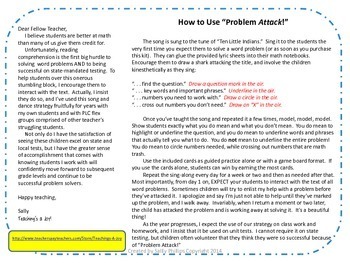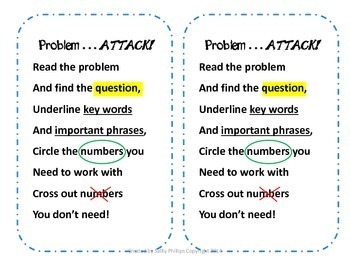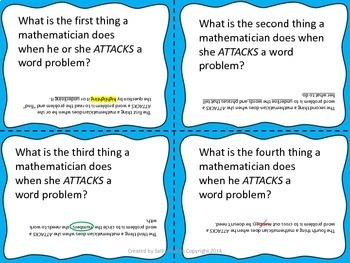Word Problem Attack Strategy--Close Reading Approach to Math Problems
Teaching's A Joy
185 Followers
Grade Levels
3rd - 6th, Homeschool
Subjects
Resource Type
Standards
CCSSMP1
Formats Included
- PDF
Pages
8 pages
Teaching's A Joy
185 Followers
Description
Use the step-by-step word problem attack song, “dance,” printable,
and task cards by Teaching's a Joy to teach your students to solve problems--once and for all. This is Math Rescue for students in third, fourth, and fifth grades.
I've used this song and dance approach successfully with an incredibly diverse population of students for many, many years with amazing success. My students look forward to problem-solving sessions!
Set includes answers on each card (upside down and in fine print).
Total Pages
8 pages
Answer Key
Included
Teaching Duration
N/A
Report this resource to TPT
Reported resources will be reviewed by our team. Report this resource to let us know if this resource violates TPT’s content guidelines.
Standards
to see state-specific standards (only available in the US).
CCSSMP1
Make sense of problems and persevere in solving them. Mathematically proficient students start by explaining to themselves the meaning of a problem and looking for entry points to its solution. They analyze givens, constraints, relationships, and goals. They make conjectures about the form and meaning of the solution and plan a solution pathway rather than simply jumping into a solution attempt. They consider analogous problems, and try special cases and simpler forms of the original problem in order to gain insight into its solution. They monitor and evaluate their progress and change course if necessary. Older students might, depending on the context of the problem, transform algebraic expressions or change the viewing window on their graphing calculator to get the information they need. Mathematically proficient students can explain correspondences between equations, verbal descriptions, tables, and graphs or draw diagrams of important features and relationships, graph data, and search for regularity or trends. Younger students might rely on using concrete objects or pictures to help conceptualize and solve a problem. Mathematically proficient students check their answers to problems using a different method, and they continually ask themselves, "Does this make sense?" They can understand the approaches of others to solving complex problems and identify correspondences between different approaches.





